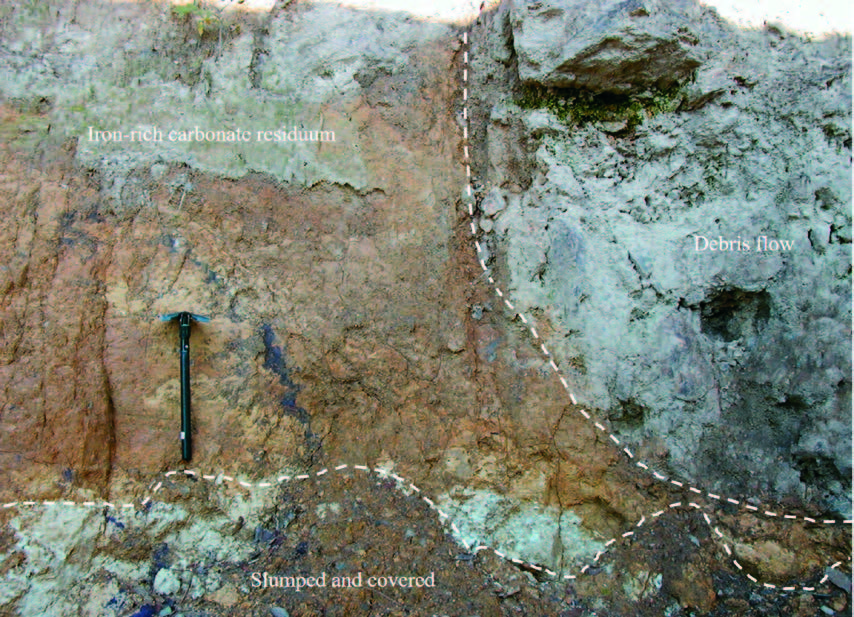Evolution of Mantled Karst Along the Blue Ridge-Great Valley Margin, USA: An Environment of Sediment Accumulation and Possible Preservation
DOI:
https://doi.org/10.3986/ac.v48i3.7441Abstract
The Appalachian landscape provides an excellent opportunity to examine an environment that promotes sediment subsidence, accumulation and possible preservation: mantled karst. Mantled karst exists along the Blue Ridge-Great Valley margin from south-central Pennsylvania to central Virginia. Topographically, the mantled karst contains low-relief irregular topography with abundant surface depressions, some of which contain ponds, and in places lacks continual surface drainage and springs. Sand and gravel quarries along the valley margin expose predominantly stream flow, hyperconcentrated flow, debris flow and hillslope (colluvial) deposits that mantle karstic Paleozoic bedrock and carbonate residuum. Unconformable and sometimes erosive contacts between carbonate residuum and clastic sediments, and soft-sediment deformation features have been observed within exposures suggesting subsidence into accumulation and/or preservation space created by geochemical dissolution and collapse that continues today. The likelihood of long-term survival in the geological record is dependent upon the relationship between the subsiding sediment and geomorphic base level. The Blue Ridge-Great Valley mantled karst likely contains both short-term accumulation space that is closer to geomorphic base level, thus more prone to removal by fluvial processes, and preservation space, which occurs well below geomorphic base level, where sedimentary sequences may be stored for prolonged periods of time. Ultimately, both accumulation and preservation spaces can provide insight into depositional processes, landscapes and possibly paleoenvironmental conditions, but the geologic record becomes more distorted and fragmented further back into deep time and as this landscape evolves into the future.
Key words: karst, sedimentary environments, subsidence, preservation potential, landscape evolution.
Razvoj pokritega krasa na robu območja Blue Ridge – Great Valley, ZDA: okolja akumulacije in ohranjanja sedimentov
Pokriti kras Apalačev nudi izjemne možnosti preučevanja odlaganja, akumulacije in ohranjanja sedimentov. Za pokriti kras na robu območja Blue Ridge – Great Valley med južno-osrednjo Pensilvanijo in osrednjo Virginijo so značilna topografsko razgibana nižavja s številnimi depresijami, ki so lahko tudi ojezerjene, površinski odtok pa je ponekod nepovezan. Kamnolomi peska in grušča vzdolž roba doline razkrivajo različne fluvialne in pobočne sedimente, ki pokrivajo zakrasele paleozojske karbonate in njihov reziduum. Nekonformni in erozijski stiki med karbonatnim reziduumom in klastičnimi sedimenti ter deformacijske oblike v mehkih sedimentih kažejo na akumulacijo in ohranjanje sedimentov v kraških prostorih. Časovna stabilnost sedimentov je odvisna tudi od položaja ugrezanja sedimentov glede na erozijski nivo: prostori akumulacije so blizu erozijskega nivoja in zato podvrženi fluvialnemu odnašanju, prostori ohranjanja pa so pod erozijskim nivojem, zato so tam sedimentna zaporedja ohranjena precej dlje. Preučevanje prostorov akumulacije in prostorov ohranjanja nam omogoča boljše razumevaje razvoja pokrajine in sedimentacijskih procesov v njej. Starejši zapisi so slabše ohranjeni in bolj razdrobljeni.
Ključne besede: kras, sedimentacijska okolja, ugrezanje, potencial ohranjanja sedimentov, razvoj površja
Downloads

Downloads
Published
How to Cite
Issue
Section
License
Authors guarantee that the work is their own original creation and does not infringe any statutory or common-law copyright or any proprietary right of any third party. In case of claims by third parties, authors commit their self to defend the interests of the publisher, and shall cover any potential costs.
More in: Submission chapter




